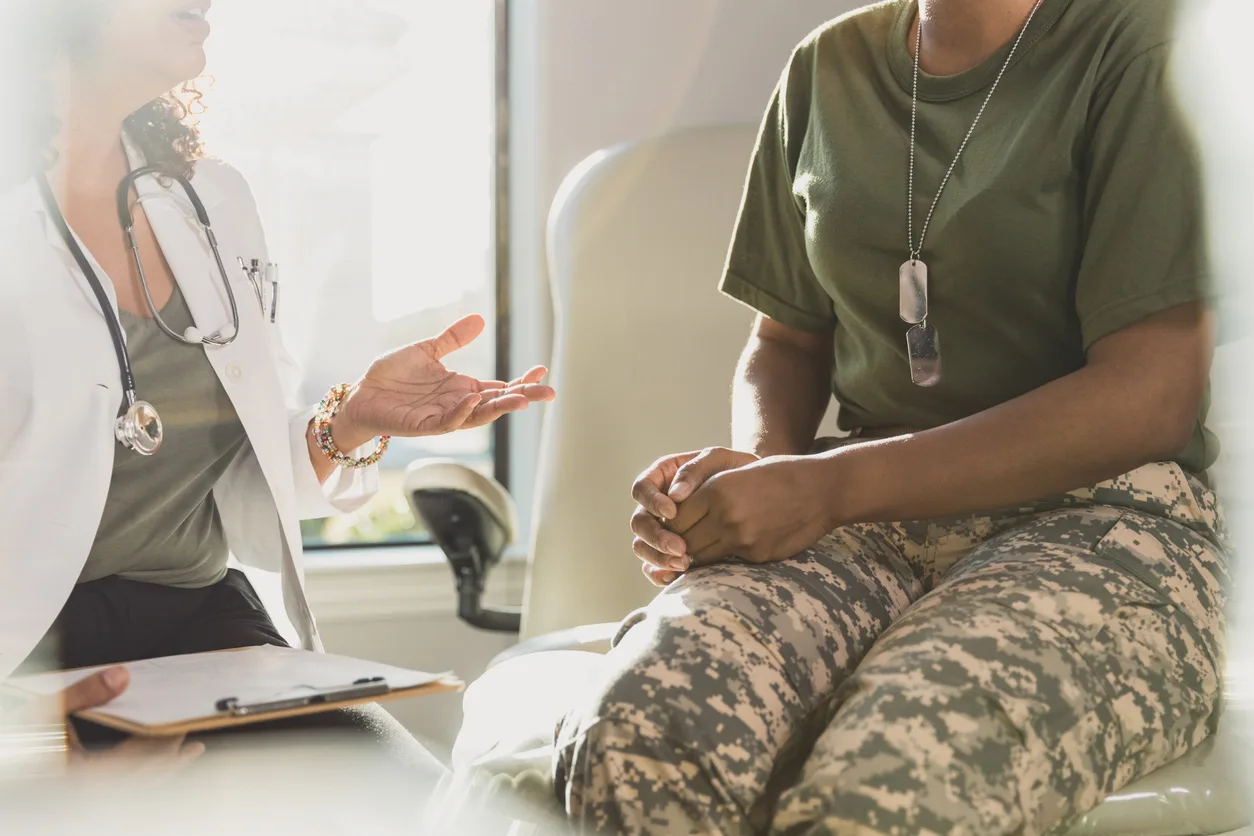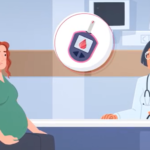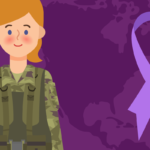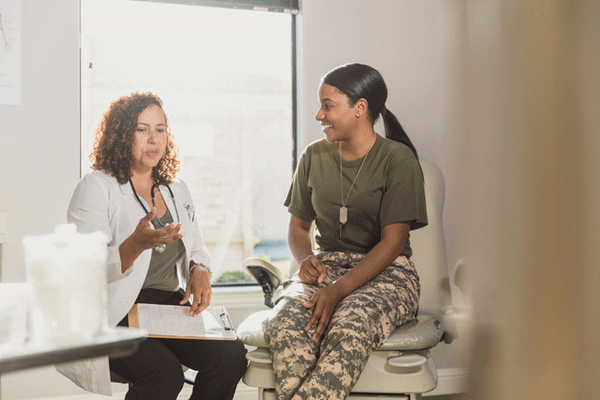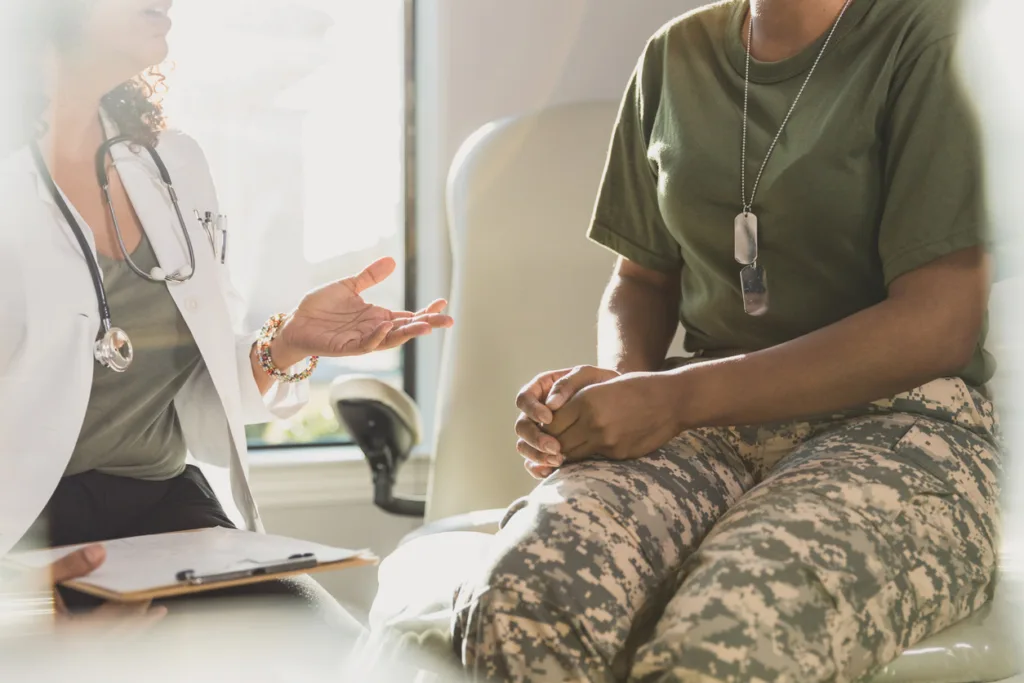The pain in her abdomen started during a 2011 deployment to Iraq. But two years would pass before Rebecca Lipe, then a 27-year-old Air Force captain, learned what was causing her chronic pelvic pain. During that time, Lipe endured multiple misdiagnoses and treatments that would eventually require her to have a hysterectomy.
Though Lipe’s case is extreme, it’s not unheard of. Neither is the pain she endured. Chronic pelvic pain is common in female veterans, particularly those who have experienced combat trauma, PTSD or military sexual trauma, according to the Department of Veterans Affairs.
By definition, chronic pelvic pain is pain in the lower abdomen, genital area, lower back or thighs that lasts more than six months. Reasons for chronic pelvic pain can include:
- Irritable bowel syndrome (IBS)
- Interstitial cystitis (bladder pain syndrome)
- Pelvic floor dysfunction
- Endometriosis
- Pelvic injury or surgery
- Vulvodynia (chronic pain around the vaginal opening)
- Cysts on the ovaries
- A combination of the above
For Lipe and other servicewomen and service members assigned female at birth (AFAB), getting a proper diagnosis and effective treatment can be a long and painful journey that requires advocating for yourself when no one else will.
Watch: Ask the Expert – Ready, Healthy & Able: Know Your Patient Rights >>
“There are many reasons [pelvic pain] is misdiagnosed,” said Mandi Murtaugh, DPT, WCS, a physical therapist in Tacoma, Washington. “I think we have enough literature to back up that women aren’t listened to or it takes many specialists to find someone who takes them seriously.” And then there’s also a mindset that, if you’re in the military, you should tough it out if you’re hurting. “You don’t get to listen to your body because your job is to ignore the pain,” Murtaugh said.
In addition, some people hesitate to share pelvic pain with their provider because it makes them uncomfortable, or they don’t think their provider will be comfortable. And racial bias in OB-GYN care (and medical care overall) can make it even more difficult for women of color to receive proper diagnosis and treatment.
Lipe, who was a judge advocate general in the Air Force, toughed it out as long as she could. When she sought out base doctors in Iraq, she said, they assumed she had a sexually transmitted infection even as she insisted it was next to impossible. She was married and faithful to her husband. “It was intrusive and humiliating,” Lipe said.
When the pain got worse, the military medically evacuated Lipe to Germany, where she was again dismissed. Doctors chalked her pain up to menstrual cramps and refused to admit her, even though she could hardly stand up.
“It didn’t help that I was being evacuated with a number of injuries from IEDs,” Lipe said. “Because they couldn’t see my injury, they assumed it wasn’t as bad. If it’s not an injury you can see … it’s not treated.”
A 2010 report from the Armed Forces Health Surveillance Center — released a year before Lipe was medically evacuated — found that just 1 out of 5 medical evacuations of troops from Iraq and Afghanistan in the previous eight years were from battle-related injuries, according to Stars & Stripes, an independent military newspaper. Most were classified as having happened outside the battlefield: back and knee problems; mental disorders; and digestive, respiratory, or urinary symptoms. About 15 out of 100 evacuations for servicewomen or service members AFAB had to do with genitourinary disorders, problems with genital and urinary organs.
A similar military report released in 2021 found that “female service members had notably higher percentages of medical evacuations for mental health disorders and genitourinary system disorders” in 2020. Problems with genital and urinary organs accounted for 4.3% of female evacuations from the U.S. Central Command area of responsibility compared to 2.3% of male evacuations.
When Lipe arrived at Landstuhl Regional Medical Center in Germany in 2011, she was admitted only after a medical liaison from her command stepped in. Lipe spent a week in the medical center and was diagnosed with an infection from Iraq. “They gave me the same medicine they use to treat malaria. Obviously, it didn’t work,” she said. Lipe was then medically evacuated back to the U.S.
Over the next year, she had multiple procedures, none of which came any closer to providing answers. One doctor attributed her pain to endometriosis and prescribed hormone-depleting medications.
Watch: What Is Endometriosis? >>
“It took a huge toll on me mentally. I didn’t want to live because I was in so much pain and no one was listening to me,” Lipe said. “Finally, about a year into this, a military doctor realized they weren’t getting me to the right people to get the answers.”
He referred her to civilian doctors at the University of Florida Health. From there, Lipe was referred to a reproductive endocrinologist. The cause of all her pain: undiagnosed hernias, likely from ill-fitting body armor.
Although Lipe didn’t make the connection during her deployment, she’d spent hours wearing armor that pressed into her abdominal wall during convoys that required her to sit at a 90-degree angle. The armor didn’t fit her properly because, like much of the equipment in the military, it had been designed to fit a more traditional male body type. In fact, to protect her vital organs, Lipe had to remove the armor’s side panels and stick foam rubber under the shoulders. “The ballistic plates themselves would tear into my abdominal wall while I was traveling,” she explained.
Lipe had surgery to fix the hernias and clean up the scar tissue from previous treatments. But the damage had been done. By then, she was also suffering from vaginal atrophy, a side effect from medications prescribed for endometriosis — a condition she’d never actually had.
“I was on hormone therapy for another year to get my hormones back up to where they should be. At that point, my husband and I had begun discussing having children. I learned IVF would be the only way I could conceive. I couldn’t even endure intercourse because of the pain,” Lipe said.
After her sixth IVF treatment, she got pregnant, and gave birth to a daughter. “If they had diagnosed me right away, I could have had surgery [to repair the hernias] and gotten back to my life,” Lipe said. “The medications screwed up my body. It just wreaked havoc. Eventually, I had to have a hysterectomy.”
Lipe still has pelvic pain to this day. “It’s a constant battle,” she said, but not as bad as it once was.
Watch: Reducing Pelvic Pain in Servicewomen >>
Unfortunately, reproductive health issues like pelvic pain will only get worse without the proper treatment. “The medical system wants a diagnosis. They want to run tests and MRIs. Those things don’t get to the pelvic floor,” Murtaugh said. Further, the medical system is set up to get patients in and out within 15 minutes. “[Providers] don’t have time to sit and listen to their story. That can become a medical trauma in an attempt to get care.”
Murtaugh recommended seeking out a physical therapist who specializes in pelvic pain and a physician who is willing to listen. If you’re waiting to see a specialist, she advised, go see a physical therapist in the interim.
“We can get you treatment along the way. It’s heartbreaking to me when someone has been waiting for all of these specialists. Oftentimes, the surgeon is going to say “’Go see a physical therapist first,’” Murtaugh said.
Perhaps most importantly, keep advocating for yourself, she said.
That’s Lipe’s advice, too. “I had to advocate for myself and it wasn’t the popular thing to do. They say the squeaky wheel gets the attention, and it finally did.”


